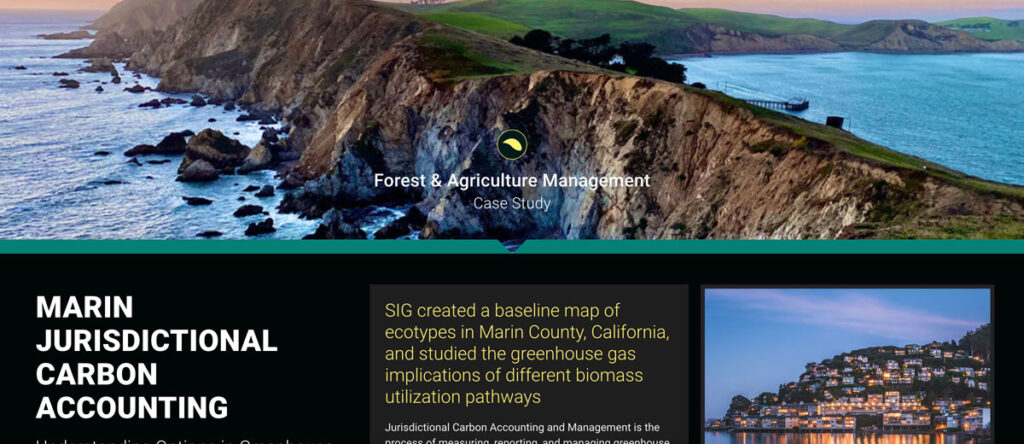Life Cycle Carbon Assessment of Biomass Power Generation

Wood pellets have been hailed as a carbon neutral form of energy, especially in Europe, where pellets are being used to satisfy Paris Agreement requirements to reduce carbon emissions. However, pellet production can result in additional biomass harvests that reduce the amount of carbon stored in forests.
Marin Jurisdictional Carbon Accounting

Jurisdictional Carbon Accounting and Management is the process of measuring, reporting, and managing greenhouse gas emissions and removals within a region. The Forest and Agriculture team has worked across the United States and in numerous other countries to measure greenhouse gas emissions and support decision making in order to limit carbon emissions.
Planning And Implementing Fuel Treatments To Reduce Fire Hazard And Restore Healthy Wildlands And Forest Communities

California landowners, land managers, and planners are acutely aware of their region’s exposure to wildfire and its associated hazards. Local, state, and federal efforts to moderate fire behavior with fuel treatments have dramatically expanded as wildfires have increased in size, severity, and community impacts.
Approved: SIG’s Methodology For Estimating Reduced Emissions From Megaffires

In March, the Climate Action Reserve’s Climate Forward program approved SIG’s Reduced Emissions from Megafires (REM) forecasting methodology. This methodology provides a novel mechanism for funding essential forest health projects by generating Forecasted Mitigation Units (FMUs) for greenhouse gas (GHG) emissions avoided by reducing the risk of catastrophic wildfires. Such funding will pave the way for reducing fuels and increasing forest resilience.
Land Trusts In Northeastern U.S. Can Enroll In The Carbon Market And Become Future Ancient Forests

Northeast Wilderness Trust (NEWT), SIG Carbon, and the Inlandsis Fund have teamed up to create an exciting new forest carbon aggregation initiative called Wildlands Carbon. Land trusts across the Northeastern United States
Implementing Low Emission Development

SIG attended the 4th LEDS GP meeting in the Dominican Republic, focusing on financing low-emission development and climate resilience strategies.

